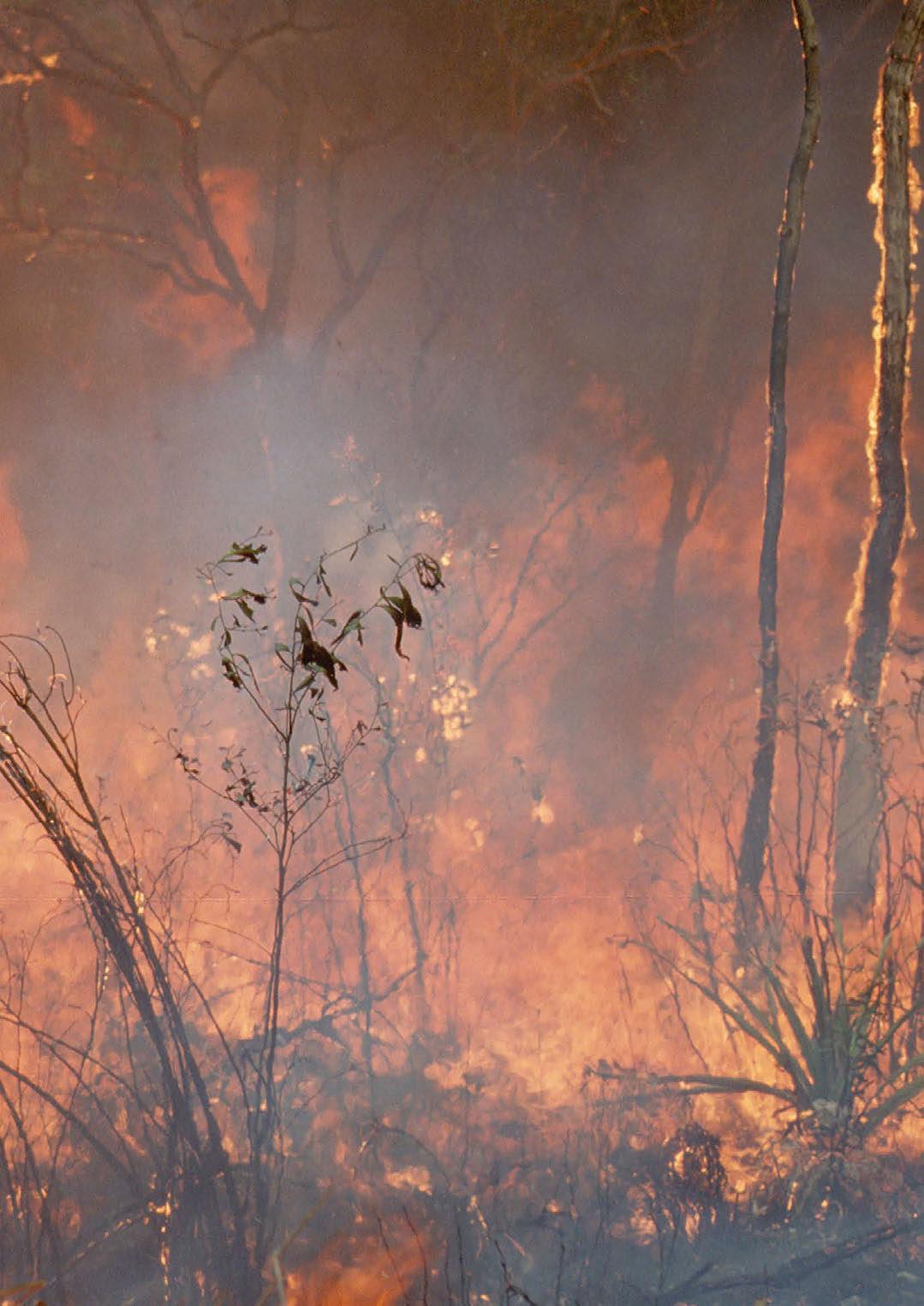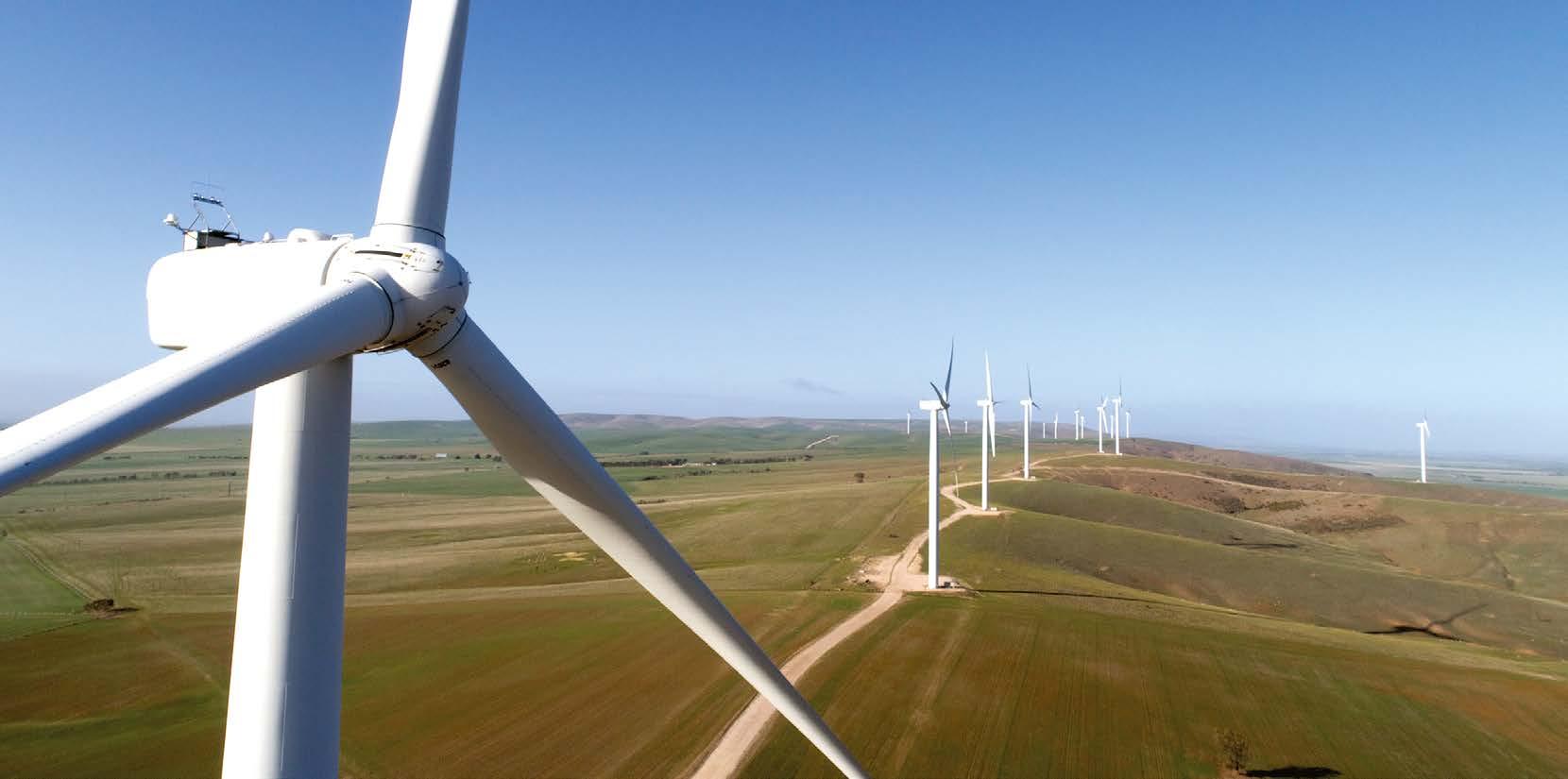
5 minute read
The energy market in 2040 by
A brighter look at the energy sector of 2040
Marilyne Crestias
Advertisement
explains why the fundamental transformation of the energy sector over the next two decades will be accompanied by profound changes to the Australian economy and society.
RIGHT NOW, our heads are spinning. We receive regular warnings about the dire environmental health of our planet. Fires and floods rage across the world. Energy policy and federal politics are in a constant state of flux and uncertainty. Global warming of +1°C is locked in and we’re likely to reach +1.5°C between 2030 and 2052.
In this article, I want to step away from this daily head-spinning news. Instead, I want to focus on Australia’s bright energy future – what the energy sector will look like in 2040 and what we need to do as a society to enable that future.
The energy sector in 2040
The market operator AEMO forecasts that around 70 TWh of coal generation will have retired by 2040 – the equivalent of around one-third of total consumption in the National Electricity Market. It will be replaced by a clean energy portfolio of utility-scale and distributed renewables, storage and gas. (See Figure 1) On the Australian East coast, this portfolio is likely to include a number of major renewable energy projects already in the pipeline: • Star of the South offshore wind farm (Victoria, up to 2GW) • Snowy 2.0 pumped hydro (NSW, 2GW) • Battery of the Nation pumped hydro and new wind projects (Tasmania) • Potential pumped hydro projects on the mainland • Walcha wind, solar and pumped hydro (NSW, up to 4GW) • Utility-scale battery storage across all States.
Other technological developments could mean Australia starts converting some of its surplus clean energy into hydrogen to be sent into the existing gas network.
The electricity ‘poles and wires’ network is also in for a big shake-up. AEMO tells us that these new clean energy projects will be clustered around Renewable Energy Zones, many of them in regional Australia. The transmission network will be augmented to ensure that this energy can be efficiently sent out to consumers. The opportunities to trade energy across State borders will be strengthened with more inter-connectors.
Consumer demand
On the demand side, it is fair to say that energy consumers will have opportunities to be much more engaged in the market. They will become key local energy producers – through distributed rooftop solar and batteries – but will also be rewarded when they change their behaviour and reduce demand.
Two more factors will drastically impact the demand of energy: • the inevitable uptake of electric vehicles (EVs), a large part of which is likely to be autonomous and part of a transport fleet rather than owned by individuals; and • some level of industry electrification using zero-emissions energy. (See Figure 2)
2020 Renewable energy Coal Gas 2040
Developments in artificial intelligence and machine learning are likely to impact not only the supply and demand of energy but also how energy participants interact in the market.
These enormous changes in the supply and demand of energy will test how nimble policymakers can be to rework the rules so that the market functions efficiently, effectively and for the benefit of all consumers. First up will be the introduction of the ‘5 minute rule’ in July 2021 to shorten the settlement period on the electricity market.
Reinvention of the energy sector over the next 20 years has the power to profoundly change the fabric of the Australian economy and of our society.
Investment in clean energy will generate many economic and social opportunities for Australia through the development of new industries and supply chains (in high value-add components, services and maintenance, and the recycling of materials by way of examples).
As Professor Ross Garnaut notes, Australia has the potential to not only become an energy superpower but also export abundant energy in the form of hydrogen or via transmission links to Asia.
Opportunities: the ripple effect
The types of jobs available in the energy industry will change. Although renewables tend to have a lower ‘job intensity’ once the projects are up and running, the clean energy supply chains will create opportunities for new jobs, including highly skilled work.
The electrification of most manufacturing processes with clean energy will be necessary to improve the competitiveness of industry over time and could give Australia – with its abundant clean energy resources – an edge on other global powers. This reshaping of the energy system and of a large part of the productive capacity of the country is set to redistribute economic power across different regional centres.
This transformation of the energy sector will also change what physical infrastructure
by 2040. The consequences for not getting this right are too dire to write about. Investment in clean energy will generate many economic and social opportunities for Australia through the development of new industries and
supply chains.”
surrounds us, how we use it and how we tax it. For example, the uptake of electric and autonomous vehicles will require the installation of a new charging network; it will change how much space we need to allocate to roads and car parks (probably less than nowadays?), and how we tax that infrastructure and its uses (petrol taxes replaced by road and congestion levies?).
How we can enable our bright energy future
Such large economic transformations never happen easily and these major shifts in the economic fabric of the country will inevitably tend to create winners and losers. There will be push back as affected industry players try to protect their private benefits and advantages.
We should call for our governments to advocate for the energy transition – because it is necessary for our long term benefit and for the health of our planet – and keep them accountable. We also need to ensure that local communities remain engaged, energy is affordable and opportunities to re-skill affected workers are available.
We should think about the profound changes coming our way in how we produce and consume energy and how we interact with the energy market. Let’s take a step back from the madness of the daily news cycle and start debating as a society how we want our energy system to work by 2040. The consequences for not getting this right are too dire to write about.
Marilyne Crestias has a wealth of experience in the economics of energy markets, renewable energy auction design, climate change and environmental policy advice. She helped deliver legislation to support the Victorian Renewable Energy Target, and designed the largest renewable energy auction in Australia. Marilyne is a Director of Renewable Energy Insights. www.renewableenergyinsights.com.au
‘Behind the meter’ generation 2020 2040
Sales of electric vehicles









